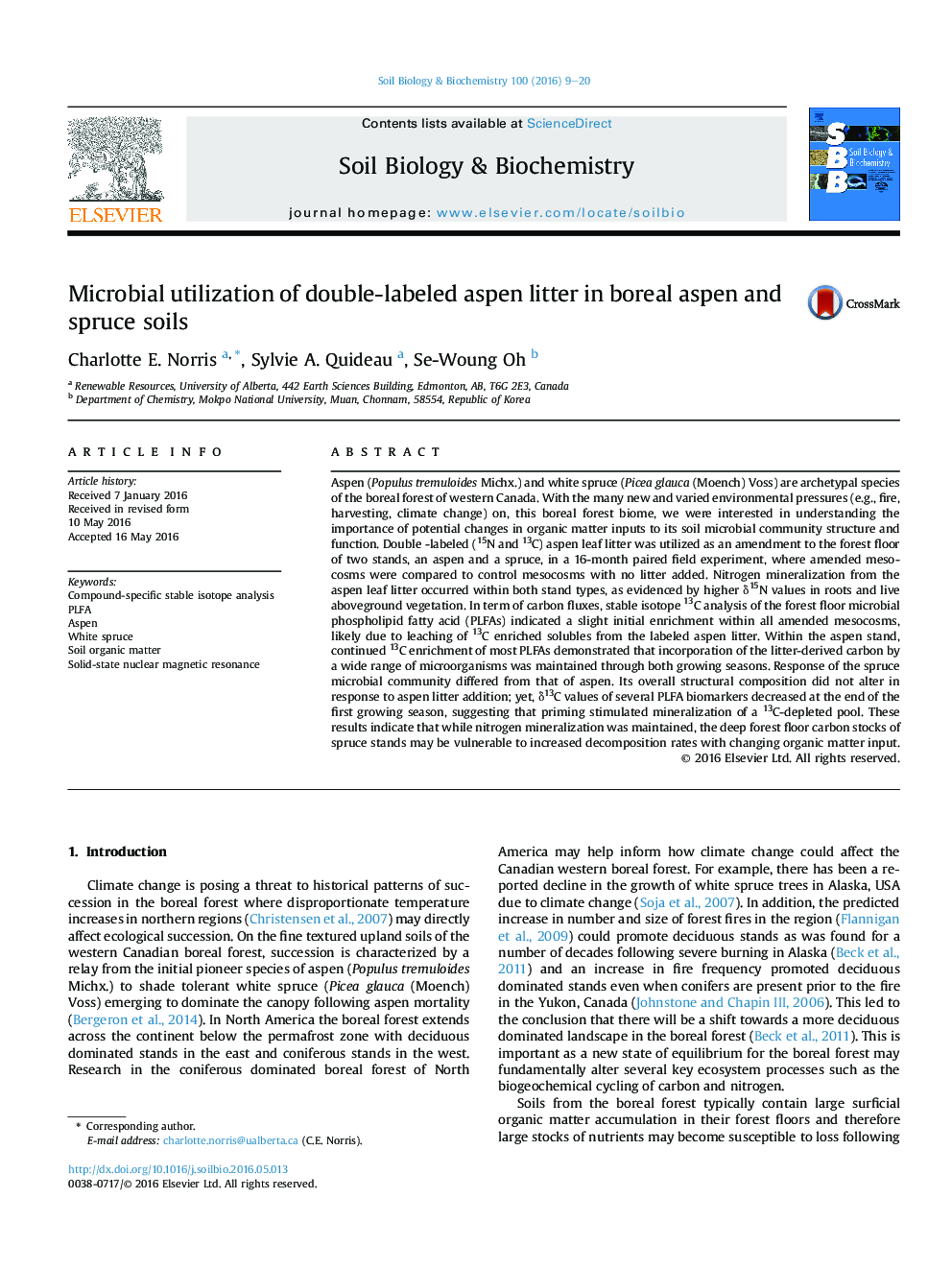| کد مقاله | کد نشریه | سال انتشار | مقاله انگلیسی | نسخه تمام متن |
|---|---|---|---|---|
| 8363423 | 1542584 | 2016 | 12 صفحه PDF | دانلود رایگان |
عنوان انگلیسی مقاله ISI
Microbial utilization of double-labeled aspen litter in boreal aspen and spruce soils
ترجمه فارسی عنوان
استفاده از میکروبی از بستر دوغاب آسپن در خاک های گوزن و صنوبر
دانلود مقاله + سفارش ترجمه
دانلود مقاله ISI انگلیسی
رایگان برای ایرانیان
کلمات کلیدی
موضوعات مرتبط
علوم زیستی و بیوفناوری
علوم کشاورزی و بیولوژیک
دانش خاک شناسی
چکیده انگلیسی
Aspen (Populus tremuloides Michx.) and white spruce (Picea glauca (Moench) Voss) are archetypal species of the boreal forest of western Canada. With the many new and varied environmental pressures (e.g., fire, harvesting, climate change) on, this boreal forest biome, we were interested in understanding the importance of potential changes in organic matter inputs to its soil microbial community structure and function. Double -labeled (15N and 13C) aspen leaf litter was utilized as an amendment to the forest floor of two stands, an aspen and a spruce, in a 16-month paired field experiment, where amended mesocosms were compared to control mesocosms with no litter added. Nitrogen mineralization from the aspen leaf litter occurred within both stand types, as evidenced by higher δ15N values in roots and live aboveground vegetation. In term of carbon fluxes, stable isotope 13C analysis of the forest floor microbial phospholipid fatty acid (PLFAs) indicated a slight initial enrichment within all amended mesocosms, likely due to leaching of 13C enriched solubles from the labeled aspen litter. Within the aspen stand, continued 13C enrichment of most PLFAs demonstrated that incorporation of the litter-derived carbon by a wide range of microorganisms was maintained through both growing seasons. Response of the spruce microbial community differed from that of aspen. Its overall structural composition did not alter in response to aspen litter addition; yet, δ13C values of several PLFA biomarkers decreased at the end of the first growing season, suggesting that priming stimulated mineralization of a 13C-depleted pool. These results indicate that while nitrogen mineralization was maintained, the deep forest floor carbon stocks of spruce stands may be vulnerable to increased decomposition rates with changing organic matter input.
ناشر
Database: Elsevier - ScienceDirect (ساینس دایرکت)
Journal: Soil Biology and Biochemistry - Volume 100, September 2016, Pages 9-20
Journal: Soil Biology and Biochemistry - Volume 100, September 2016, Pages 9-20
نویسندگان
Charlotte E. Norris, Sylvie A. Quideau, Se-Woung Oh,
